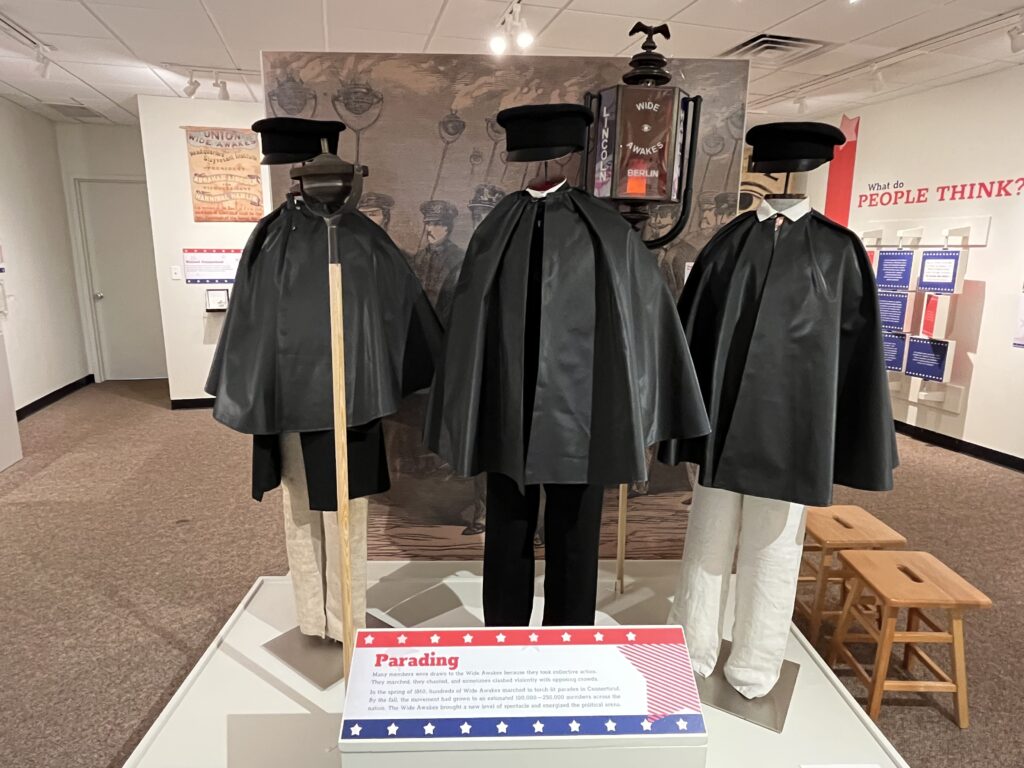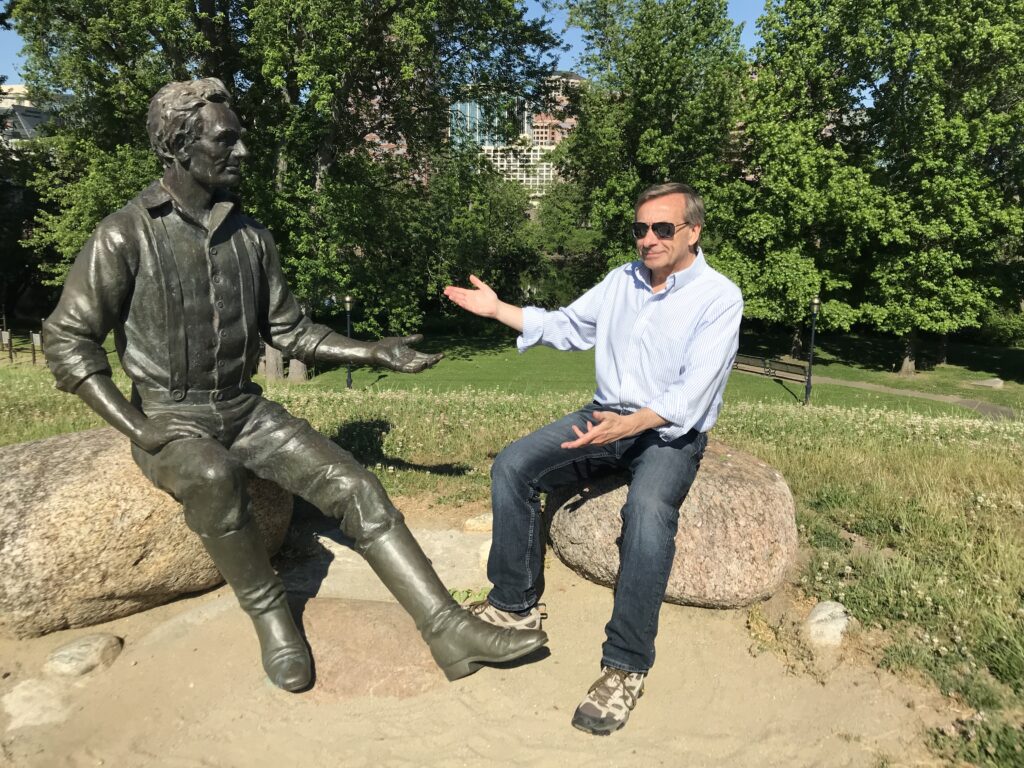Sometimes you find Abraham Lincoln in unexpected places. Take Hartford, Connecticut for example. Lincoln came to Hartford in early March of 1860, somewhat less than fresh off his successful speech at Cooper Union. His intent was to stretch out his trip east to visit his son Robert in Exeter, New Hampshire. Robert had spectacularly failed his Harvard College entrance exams and was doing remedial work at Phillips Exeter Academy in hopes of passing on the next go-around. The visit turned into an unexpected tour of three New England states. Local Republican operatives enlisted Lincoln to speak on behalf of each state’s governor and congressional races in the upcoming election. As a side benefit, it raised Lincoln’s profile just in time for the critical Republican National Convention happening in Chicago in May.
His Hartford version of the Cooper Union speech included some added features involving wens (aka, tumors), snakes in bed with children (an allegory for slavery), and opinions on a recent shoemakers strike in Massachusetts. And then there were the Wide Awakes.

On my most recent New England road trip I stopped at the Wide Awake exhibit at the Connecticut Museum of Culture and History in Hartford. The exhibit had only opened a few days before, but I had heard about it from Jon Grinspan, the author of a book by that name. I was able to join an “exhibit talk” tour by Christina Rewinski, the lead museum educator, so I was able to learn first-hand even more than what I already knew from reading the book and speaking directly with Jon. In a nutshell, the Wide Awakes started as a group of five young men (ages 17-25) who decided to support the reelection campaign of incumbent Republican gubernatorial candidate, William Buckingham, and the Republican party in general. Donning oilcloth capes and carrying torches, these five men surreptitiously escorted a surprised Cassius Clay, a well-known abolitionist who had spoken that night for Buckingham. Gaining momentum, the five quickly became twenty so they officially formed as an advocacy group under the Wide Awake banner. The very next night they again found a politician to escort: Abraham Lincoln. Lincoln was in town as one of eleven stops on his New England tour and found his carriage surrounded by a growing group of uniform-ish clad marchers as he wended his way back to his hotel for the night.
Viewing the unannounced group with a mix of confusion and amusement, Lincoln would watch the Wide Awake movement grow to several hundred thousand young men across the northern states, actively supporting the candidacy and election of Lincoln as the first Republican president. Lincoln would hold them at arm’s length – the exhibit examines how their militaristic style was seen by some, especially in the South, as a prelude to war – but appreciated the enthusiasm for his campaign they generated. The exhibit gives a history of the “Hartford Originals” and how the Wide Awakes grew exponentially over the next few months, only to effectively dissolve soon after the election (although many members enlisted to fight for the Union in the Civil War). The exhibit is well worth the visit if your travels take you nearby. It runs through March 16, 2025.

But Wide Awakes aren’t the only Lincoln connections in Hartford. Funded by a generous grant from the Lincoln Financial Group, the city created a Lincoln Sculpture Walk along River Front Park. When I visited there were fourteen sculptures by various artists lining both sides of the river. Some are obviously Lincoln scenes while others are more abstract or relate to some history associated with Lincoln. “Perseverance,” for example, by Darrell Petit, are two massive stones pushed against each other, signifying Lincoln’s perseverance despite the many setbacks in his life, including political defeats, financial failure, death of loved ones, and public humiliation. Similarly, “Right to Rise” by Don Gummer is a vertical sculpture that symbolizes Lincoln’s belief that each resident, regardless of origin, can rise up the economic ladder and better themselves through hard work and diligence. My favorite sculpture along the walk is “A Welcome Conversation” by Dan Sottile. A twenty-something Lincoln sits on a large rock, apparently in New Salem, his arm outstretched toward another empty rock as if inviting the viewer to join him in conversation. I did exactly that.
More on Lincoln in New England coming soon.
[Photos of Wide Awake exhibit at CT Museum (top) by David J. Kent and Hartford Sculpture Walk (bottom) by Ru Sun.]

Lincoln: The Fire of Genius: How Abraham Lincoln’s Commitment to Science and Technology Helped Modernize America is available at booksellers nationwide.
Limited signed copies are available via this website. The book also listed on Goodreads, the database where I keep track of my reading. Click on the “Want to Read” button to put it on your reading list. Please leave a review on Goodreads and Amazon if you like the book.
You also follow my author page on Facebook.
David J. Kent is Immediate Past President of the Lincoln Group of DC and the author of Lincoln: The Fire of Genius: How Abraham Lincoln’s Commitment to Science and Technology Helped Modernize America and Lincoln: The Man Who Saved America.
His previous books include Tesla: The Wizard of Electricity andEdison: The Inventor of the Modern World and two specialty e-books: Nikola Tesla: Renewable Energy Ahead of Its Time and Abraham Lincoln and Nikola Tesla: Connected by Fate.










